featuring:
Jonathan Rollo + Kristi Ritchey
- recipe:
- BLT thin-crust pizza w/ avocado pesto
Right on Orange, right on 17th and we arrive at 234. It’s 6:10am and dark, real dark, but the lights are on inside Greenleaf. We grab gear, walk in, and say morning, greeted by smiles + excitement.
As the sun starts to color the sky we unpack and I look around for my first snaps of the day. So much to choose from… old tins, colorful signage, interesting lamps dangling around you. Click click. The windows give an open and airy feel. Plant life everywhere. It’s peaceful. Click click.
We head to the garden on the side that yields some of the crops for our upcoming dishes. Very cool. Hey Bob, we’re ready to cook! I hum, We’re off to see the kitchen…












How important is farm fresh? Jonathan: It’s absolutely everything. It allows for higher nutrient content, it allows us to know our farmers and know exactly what we’re getting. There’s just no way to do that if you’re buying in bulk from mega farms in the middle of America where stuff gets prematurely picked and ripened in transit to some big warehouse in downtown L.A. where it gets boxed up and cryo bagged and frozen.

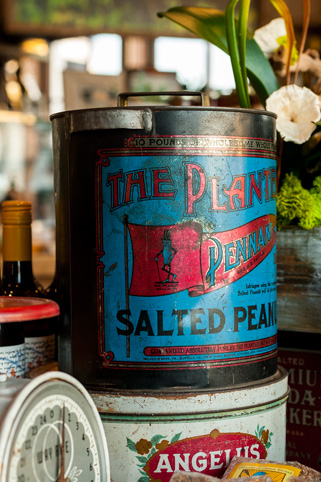

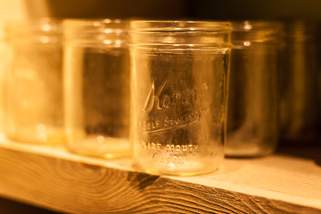






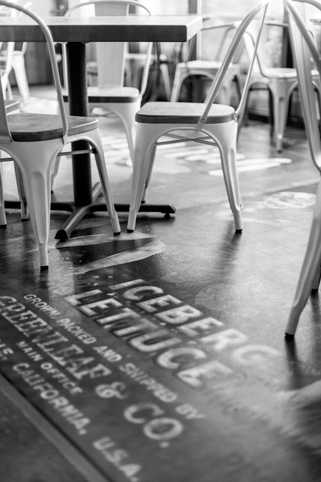



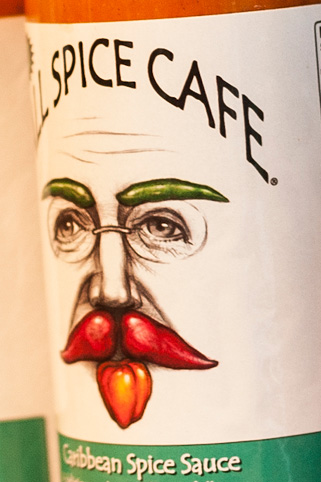
What’s the story behind the design elements of Greenleaf? Jonathan: When we opened our original store, the idea was an urban farm stand. Something that allowed us to showcase the freshness of the ingredients and allow our customers to see exactly what they were getting. The general aesthetic is to feel like you’re walking into a Napa or Sonoma Valley farm stand or you’re at a nice indoor/outdoor space in Santa Barbara. Worn-in, warm, comfortable.
I’ve always tried to be as ecofriendly as possible on our build-outs, so all the wood elements in here came from other construction projects. The riddling racks were all salvaged from a dump. You think of all these things filling up a landfill and it’s horrible. So part of our whole ‘green is good’ mantra is how to minimize the effect that we have on the environment when doing a build-out, because it can be so disastrous filling dumpster after dumpster with debris that has to go… somewhere.











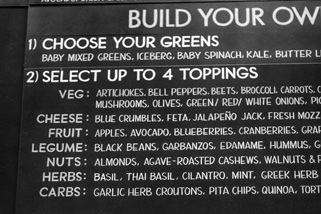




Do you think the phrase ‘farm to table’ is overused? Kristi: People take in new fads and unfortunately, just like any phrase that gets overused, the meaning behind it sometimes gets dropped—but it’s something we live by day to day When the fad’s gone, when people forget the phrase and there’s a new one in six months, we’ll still be doing it because we know that’s the best quality product we can get.
Jonathan: ‘Farm to fork.’
K: It’s crazy. Food is just like clothes. You’ve got your fads, the newest trends. Farm to table, however you want to say it, getting that best quality product from the local guy you trust, that’s what we’re about and that’s what we do. Whether it’s cool or not.
J: And if you think about it, this is how food was done before industrialization was able to package and shelf things. I’m not saying we should go back to basics 100%, but methods swing in extremes and then people realize ‘Oh, maybe it’s not really the best thing for us,’ so they moderate it a little bit.
We do Saturday morning kids’ classes here just to educate them on the garden; they can pot their own plant and grow something themselves. You always hear people say ‘Oh my God, that’s how you grow a tomato?’ People don’t realize apples come from trees and pumpkins grow on a vine. It’s unfathomable how removed we are from the actual process as a society. And I’m not blaming anyone, it’s understandable but at the same time I’m shocked when kids see something fresh for the first time, literally watch it walk from garden to kitchen to their plate. They don’t understand that the grocery store does not produce their lettuce. That slab of beef actually came from a cow. It’s amazing how the steps get skipped so it’s important to us to practice what we preach, everything we do is about spreading that message.

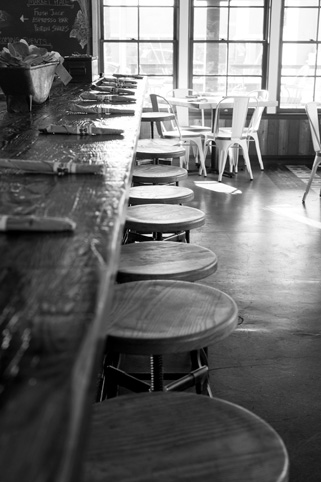
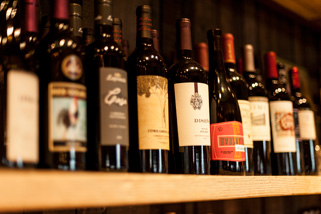

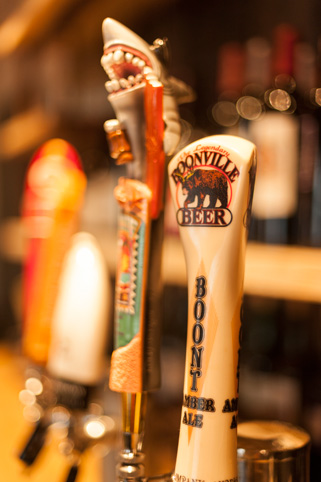
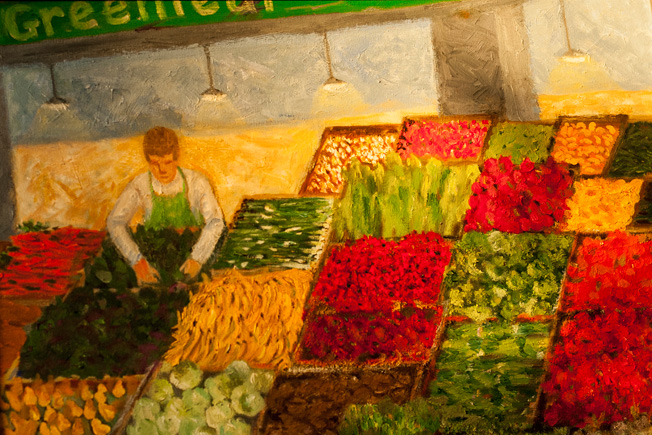
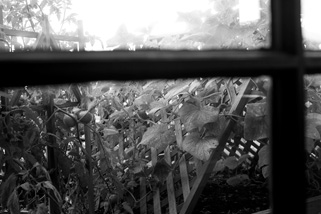






Where did the name Greenleaf come from? Jonathan: I wanted something that really painted a picture of everything that we do, focused on the food, and then obviously extending into our perspective on being as ecofriendly and healthy as possible. You should have seen, my dining room was covered floor to ceiling with papers with just one word on it. Is that the one? Is that the one? Literally just the entire room. When you name something you kind of come up with what the rules are for it. I wanted a 2-syllable word that had a strong consonant and was a visual for what we are. There were hundreds of words fell into that category, but this was it.
















What are your priorities in life?Jonathan: The whole reason that Greenleaf was started was because my priorities shifted. I thought that the priorities were to have a great job and do something that pays you a lot of money and then everything else would fall in line, and very quickly I learned that if those are your goals, everything else kind of gets pushed to the side. So I left my big fancy corporate job and went to culinary school. I wanted to do something I was really, really proud of and whether I made a lot of money or not, was something that I could explain to my kids or my grandkids. I wanted to at least give my heart a shot in dictating my life. The minute I opened myself up to that, everything else kind of redirected. Once I had been in the cooking world and working for restaurants for a little while, I could take what I loved doing and turn it into a business. Now the priorities are creating a healthy environment not only for our customers, but also our employees. Our whole team of people, I mean now we have…
Kristi: 120?
J: 140?
K: Yeah.
J: …people working for us so it’s a full time job just making sure our employees are taken care of and making sure that everyone feels like they’re a part of this team. That’s the priority now.
K: And for me they shifted because I was working nights in fine dining and I was so intent on building this career that I left everything else behind. My family, my friends, I did nothing but work. I had no balance in my life and I also had very poor eating habits. Being part of Greenleaf allowed me to find a balance. Now I have time with my family plus an amazing family in each one of these restaurants.
We work hard, but at the end of the day we can go home and have a life outside these walls, which so many chefs give up. A lot of people make that quote unquote sacrifice. They sacrifice their personal life for their career. I’ve been fortunate enough to do both with Greenleaf and that’s been a great thing for me.










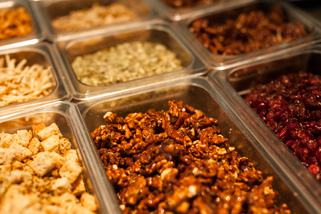

What’s your kitchen soundtrack? Jonathan: We let our guys choose the music in the mornings so it’ll swing from ranchera to banda to hardcore heavy death metal Mexican rock. It’s a mix between Mexican wrestling and a mosh pit.
Kristi: Everything has a nice beat to it, though. We tell the guys they can play whatever they want—but it’s got to have a beat. It’s got to give them energy, it’s got to motivate. I always joke that I’m going to turn Rocky on before a big day, and every so often it actually comes on.
J: We actually put speakers in the kitchen here just for that reason. You always walk into a kitchen and there’s a little radio plugged in, the kind with tin foil on the antenna extending up into the roof. So we put real speakers in here.










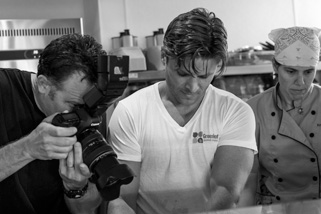


What chef tool could you not live without? Kristi: My one would be my chef knife.
Jonathan: I was going to say that.
K: I use it for everything. Spatula, chopping, I mean, anything and everything.
J: What are you going to say, a piece of machinery? No, that knife is really an extension of your hand. I could go into any kitchen and as long as I have a good knife, things will be okay.
We get answers across the board… peelers, spatulas— K: But the knife can do all those things. You can turn a knife into a peeler, trust me I’ve done it. A nail file even turns into a nice peeler in a pinch.
J: We’re lucky that Kristi stopped talking so much with her hands because that knife gets really animated…[Everyone laughs]








the recipe:
BLT thin-crust pizza
- 1/3 c. grilled turkey bacon, chopped
- 1 large fresh roma tomatoes, thinly sliced
- 3/4 c. fresh romaine lettuce, shredded
- 1 oz. parmesan cheese
- 3 oz. avocado pesto spread (see recipe)
- 1 10-in. whole wheat tortilla (lower cal, trans fat-free)
- Spread avocado pesto on tortilla
- Layer tomato slices and turkey bacon on top
- Grill or bake in oven at 475°F until tomatoes are golden brown in places and the edges of the tortilla are browned
- Top with lettuce and serve immediately.
Avocado pesto
- 5 ripe avocados
- 1/2 tbsp. fresh garlic, minced
- 1/2 tbsp. chili flakes
- 1 bunch basil
- 2 oz. pine nuts
- Kosher salt, to taste
- Black pepper, to taste
- Puree all ingredients together in a food processor.
- Add a small amount of cold water if needed to gain desired texture and thickness.
